FAQ - Fragen & Antworten

Digitale WasserwaagenRelevant für Modelle der Serien: DWL 80 / 100 / 200 / 600 / 1000XY |
|
|
Q: |
Wurden Digi-Pas Wasserwaagen von international anerkannten Institutionen kalibriert/geprüft/zertifiziert? |
|
Q: |
Werden die einzelnen Digi-Pas Wasserwaagen im Voraus kalibriert? |
|
Q: |
Warum muss ich die “Nutzerkalibrierung” durchführen? |
|
Q: |
Woher weiß ich, wann ich meine Digi-Pas® Wasserwaage kalibrieren muss? |
|
Q: |
Wie kalibriere ich meine Digi-Pas® Wasserwaage? |
|
Q: |
Was passiert, wenn meine Wasserwaage herunterfällt, oder außerhalb der empfohlenen Temperaturspanne aufbewahrt wird? |
|
Q: |
Warum erhalte ich unterschiedliche Messergebnisse, wenn ich meine Wasserwaage erst in der einen Richtung und dann an gleicher Stelle in genau umgekehrter Richtung platziere? |
|
Q: |
Was ist der maximale Messunterschied, bevor ich meine Wasserwaage neu kalibrieren muss? |
|
Q: |
Wie ist die Genauigkeit der Digitalanzeige im Vergleich zur eingebauten Libelle? |
|
Q: |
Warum sind in den digitalen Wasserwaagen zusätzlich Libellen verbaut? Ist die Genauigkeit gleich? |
|
Q: |
Wie hoch ist die Messgenauigkeit von Digi-Pas Digitalwasserwaagen? |
|
Q: |
Warum erhalte ich unterschiedliche Messergebnisse auf der Digitalanzeige, wenn ich meine Wasserwaage in umgekehrter Richtung positioniere? |
|
Q: |
Warum "flackert" die Digitalanzeige während der Messungen? |
|
Q: |
Wofür brauche ich das Feature “abweichender Nullpunkt” (Alt Zero)? |
|
Q: |
Wo erhalte ich eine neue Gebrauchsanweisung für meine Digi-Pas digitale Wasserwaage? |
|
Q: |
Wie lange habe ich Garantie auf meine Digi-Pas Digitalwasserwaage? |
|
Q: |
Sind Digi-Pas Wasserwaagen wasserdicht? |
|
Q: |
Welche speziellen Hinweise muss ich bei den wasserdichten Modellen (DWL 280Pro und DWL680Pro) beachten? |
|
Q: |
Kann ich Digi-Pas Wasserwaagen auf heißen Oberflächen verwenden? |
|
Q: |
Wie schalte ich das akustische Signal AN oder AUS? |
|
Q: |
Kann die Lautstärke des akustischen Signals verändert werden? |
|
Q: |
Warum braucht die Anzeige länger als 3 Minuten, um sich selbst abzuschalten? |
2-Achsen Präzisions-Wasserwaagen & NeigungsmesserRelevant für Modelle der Serien: DWL 2000XY, DWL 3000XY, DWL 3500XY & DWL 8500XY Series |
|
|
Q: |
Was sind die Vorteile von digitalen 2-Achsen Präzisions-Wasserwaagen im Vergleich zu einachsigen Digitalwasserwaagen / Libellenwasserwaagen? |
|
Q: |
Werden Digi-Pas Wasserwaagen von international anerkannten Institutionen kalibriert/geprüft/zertifiziert? |
|
Q: |
Warum muss ich die “Nutzerkalibrierung” durchführen? |
|
Q: |
Warum erhalte ich unterschiedliche Messergebnisse auf der Digitalanzeige, wenn ich meine Wasserwaage in umgekehrter Richtung positioniere? |
|
Q: |
Kann ich die Nutzerkalibrierung für meine 2-Achsen Präzisions-Wasserwaage selbst durchführen und welche Hilfsmittel benötige ich dafür? |
|
Q: |
Erhalte ich ein Kalibrierzertifikat oder ein Zertifikat zur Produktkonformität zusammen mit meinem Messgerät? |
|
Q: |
Was ist der Zweck des Features “Genauigkeitsabgleich” (Absolute Level)? |
|
Q: |
Ist es notwendig, dass ich den “Genauigkeitsabgleich” (Absolute Level) vor jeder Messung durchführe? |
|
Q: |
Was ist der Zweck des eingebauten Schwingungsmessers und wie kann dieser bei der Ausrichtung von Präzisionsmaschinen helfen? |
|
Q: |
Kann ich die 2-Achsen Präzisions-Wasserwaagen oder -Neigungsmesser an meinen Maschinen oder Geräten anbringen? |
|
Q: |
Können die Messergebnisse der Präzisions-Wasserwaagen auch ohne die PC Pro-Software abgespeichert werden? |
|
Q: |
Wie groß ist die Reichweite der Bluetooth-Verbindung? |
|
Q: |
Was passiert mit der Genauigkeit, wenn das Messgerät herunterfällt? |
|
Q: |
Wie lange halten die Batterien der 2-Achsen Präzisions-Wasserwaagen? |
|
Q: |
Wie lange habe ich Garantie auf Digi-Pas 2-Achsen Präzisions-Wasserwaagen? |
|
Q: |
Welches Zubehör erhalte ich beim Kauf einer Digi-Pas Präzisions-Wasserwaage? |
|
Q: |
Warum muss ich Updates für die Firmware durchführen? |
Software zur Synchronisation mit dem PCRelevant für Modelle der Serien: DWL 2000XY, DWL 3000XY, DWL 3500XY & DWL 8500XY |
|
|
Q: |
Worin besteht der Unterschied zwischen Basis-Software und Pro-Software? |
|
Q: |
Was sind die PC-Voraussetzungen für die Software zu meiner Präzisions-Wasserwaage? |
|
Q: |
Warum muss ich Updates für meine Digi-Pas PC-Software durchführen? |
|
Q: |
Nach dem Einstecken des USB-Sicherheitssteckers in den PC erscheint die Meldung “Dongle is not found...”? |
|
Q: |
Wenn ich die Präzisions-Wasserwaage per Bluetooth mit dem PC verbinden will kann keine Verbindung hergestellt werden (z.B. Bluetooth Stack oder Passkey nicht gefunden). Was soll ich tun? |
For more information:
Advantages of using Digi-Pas® 2-Axis precision digital inclinometer over conventional single-axis levelling instruments:
Traditional spirit level, pendulum-based digital level and inclinometer were constrained with (i) single axis, (ii) narrow angle measurement range and (iii) large footprint/size. Single-axis inclinometer is also susceptible to cross-axis error particularly when measuring at larger angles. However, precision levelling, angle measurement, alignment and surface flatness profiling tasks essentially involve 2-dimensional plane rather than two independent orthogonal single-axis lines. Digi-Pas® 2-Axis precision inclinometer utilizing advanced MEMS technology provides simultaneous 2-axis and wide angle measuring range capabilities that traditional single-axis digital/'bubble' levels are unable to offer.

-
2-axis MEMS technology enables simultaneous 2D (X-Y plane) leveling and angles measurement instrument (i.e. pitch & roll), completely eliminates tedious trial-and-error (i.e. going back-and-forth taking reading one-axis at a time) experienced when using single-axis levels to align precision machines/objects. No costly need for owning 2 units of single-axis digital levels to do the same task as one unit Digi-Pas® dual-axis. i.e. effective & time saving. The repetitive yet monotonous trial-and-error activity of using single-axis levels is also time-consuming, non-productive and promote boredom that often succumb engineers to resort for compromising works.
-
Digi-Pas® 2-axis MEMS driven inclinometers are compensated and calibrated for non-linearity and operating temperature variation utilizing proprietary advanced manufacturing patented processes. Angular accuracy and stability performance over a very wide measurement range are externally verified by accredited 3rd party independent certification bodies traceable to NIST, UKAS, DIN & JIS. i.e. accredited & reliable. Because of its 2-axis, wide angular measuring range and vibrometer functions, Digi-Pas® inclinometer is more than just a leveling tool. It is an instrument that provides a comprehensive solution for planar angular leveling, measuring, diagnostic and alignment needs.
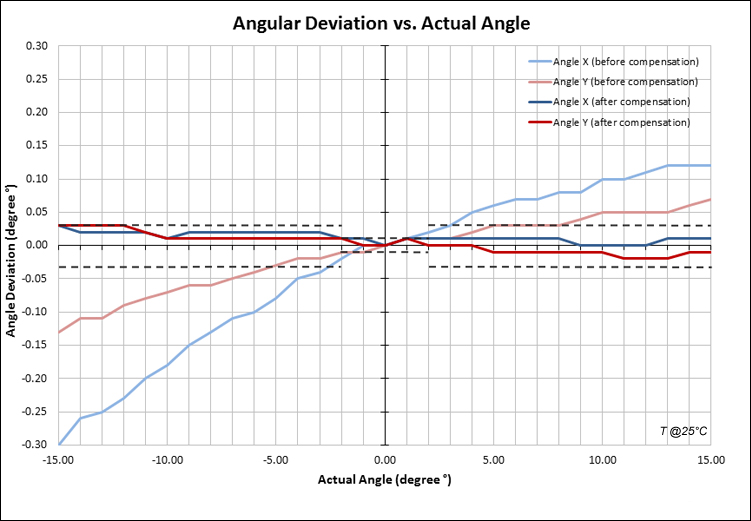

Compensating and calibrating Digi-Pas® 2-Axis Machinist Digital Level Digital Bull's Eye with numerical/graphical data and a built-in VibroMeter enable machine installer to track/guide alignment in real-time and instantly verify positional stability of the levelled/aligned machine by comparing machine's status profiles before and after setting up. Dual axis smart Bull's eye also prevents parallax error that is prone to experience when viewing the 'bubble' of a traditional spirit level, i.e. accountability & quality works.
Wireless/USB connectivity to PC/mobile device enables engineers to perform 'one-man-operation' when conducting levelling and alignment tasks, i.e. speedy & cost saving.
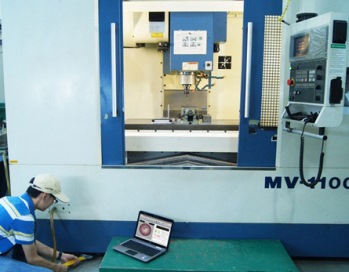
'One-man-operation' can be performed when levelling machine using Digi-Pas® 2-Axis precision Digital Level via wireless Bluetooth connectivity
Utilizing Digi-Pas® 2-axis inclinometer translates into speedy machine installation and productive maintenance works with professional quality that maximizes precision machine performance. Thus, leads to improved user's product quality (e.g. accuracy & yield) and higher customer satisfaction.
Digi-Pas® 2-axis digital inclinometer provides a comprehensive solution for precision levelling and angular measurement, and serves as a superior alternative that seeks to replace the use of outdated spirit levels and limited angle-measuring range of conventional single-axis digital levels.
©2026 DIGIPAS TECHNOLOGIES INC. All Rights Reserved
Precision Digital Level Accuracy and Reliability - Digi-Pas® 2-Axis Technology
In any precision measuring instruments and metrology, accuracy and reliability are very important aspects to users. Readings from an inaccurate measuring instrument/tool would result in making a faulty decision and in many cases could have unintended consequences.
Digi-Pas® 2-axis digital leveling instruments are built with advanced MEMS Sensor Technology and precisely calibrated for non-linearity for its entire measurement range using high precision computer numerical controlled equipment with resolution of 0.0001° (< 1 arcsecond). The accuracy and repeatability conformance of these highly specialized calibration equipment are further tested and periodically verified with ultra-high precision angular rotary systems (<0.01 arcsecond), as well as laterally compared against measuring data from world-leading accredited test and certification bodies in Japan, USA, UK and Germany, traceable to NIST, JIS, UKAS & DIN. Series of Calibration Certificates obtained from these certification bodies are obvious evidences of our product conformance to specification. This has demonstrated Digi-Pas® capability and its leading-edge technology to develop and manufacture world-first dual-axis high precision angular measuring instruments.

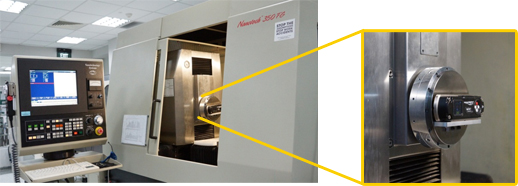
The digital technology adopted has enabled Digi-Pas® angular measuring instruments to be compensated for wide operating temperature variation utilizing Digi-Pas® patented advanced calibration processes (US Pat. No. 9,459,121 B2). Programmable precision temperature and humidity chambers are also utilized to calibrate various Digi-Pas® product lines for a range of -20°C to +60°C. This has enabled these products to reliably withstand stringent operating environment in many harsh terrains ranging from building skyscrapers in the desert of Middle-East to the constructing of oil pipes, tunnels and bridges in the freezing cold countries such as Canada, the Nordic and Russia.
-
Characterizing Digi-Pas® 2-Axis High Precision Digital Level
It is well known that a typical characteristic of MEMS tilt sensor inherently contents nonlinearity within its angular measuring range at any fixed operating temperature as well as when temperature changes. These nonlinearities affect angular instrument accuracy becomes even more significant when dealing with ultra-precision angular measuring system. Digi-Pas® employs our proprietary calibration processes utilizing advanced calibration technologies to stabilize multiple variables contributed by material properties, components and electronic system. Hysteretic nonlinearity and cross-axis error have been controlled and managed to a level negligible or within product’s specification.
-
Calibration and Testing of 2-Axis Precision Digital Level and Inclinometer
Calibration and testing of precision angular measuring instrument become very challenging at higher precision, wider measuring range and multi-axis. Test equipment’s linearity compounding error within entire measuring range and testing processes such as Swash errors become major impediments for establishing a responsible budget on measuring system uncertainties of no less than 95% confidence level at a coverage factory of k=2.
Over the years, Digi-Pas® has relentlessly made continuous improvements and closely collaborated with global leading 3rd party accredited test laboratories in USA, Japan, UK & Germany and world-leading National Metrology Institutes under Bureau International des Poinds et Mesures (CIPM MRA) to successfully test and verify with rigor our products performances to specification traceable to NIST, JIS, UKAS & DIN for international conformity assessments. These collaboration and cooperation have benefited many of our users in USA, EU and Asia to conveniently sending their instruments for annual calibration and test at a nearby laboratory for shorter lead-time and lower cost as these labs are in a close proximity to their respective geographical location.

Digi-Pas® Calibration equipment – Micrometer Sine Bar Digi-Pas® patent (US Pat. No. 9,459,121 B2) on methods and apparatus for calibrating ultra-precision 2-axis simultaneous angular instrument (of < 1.0 arcsec accuracy) utilizing nano-technology equipment addresses and resolves critical limitations and shortcomings inherent when using conventional single-axis rotary table or laser interferometer to calibrate and test dual-axis precision digital anglular measuring instrument by taking one axis at a time.
-
Utilizing the "Absolute Level Setting" to Set Reference Level Point to Earth Datum
In leveling applications, the primary aim is to align the surface plane of a physical object such as a machine, equipment or engineering structure to a reference leveling point, commonly known by tradesmen as ‘zero level’. This ‘reference level point’ is a planar position tangent to the center gravity of earth i.e. refers as Earth Datum. This ‘reference level point’ can then be transferred into a leveling instrument. Subsequently, this leveling instrument is used by industrial engineers to set a particular machine/object surface to a required leveling position. The process of transferring Earth Datum to a Digi-Pas® digital leveling instrument is referred as performing "Absolute Leveling Setting". By performing Absolute Level Setting on Digi-Pas® digital levels, it also effectively removes any offset resides in the instrument and thus resetting the instrument’s reference leveling point to coincide with earth datum.
Similarly, "User Self-Calibration" is another alternative process to transfer Earth Datum and automatically store the reference leveling point into a Digi-Pas® digital leveling instrument.
For further information on earth datum, please also refer to web-link: Geodetic Datum, http://en.wikipedia.org/wiki/World_Geodetic_System
-
What happen to the accuracy of Digi-Pas® leveling instrument if it drops?
Likewise to any precision measurement instrument/tool, mishandling such as dropping a digital level to the floor or storing it outside the specified temperature range, could affect its accuracy. This is due to structural deformation resulted from mechanical shock on impact when dropped and physical micro-dimensional changes (e.g. non-linearity) resulted from thermal expansion or contractions when storage temperature exceeded maximum specified range.
However, unlike traditional ‘bubble’ spirit levels and many other digital levels in the market, all Digi-Pas® digital level is built with User’s Self-Calibration feature. This feature empowers users to perform their own calibration without the need to sending to 3rd party testing laboratory for inspection when minor mishandling the device. At user’s convenient work site or field work, User’s Self-Calibration can reliably reset the Digi-Pas® digital level back to factory preset accuracy whenever in doubt with the accuracy.
For further information on Digi-Pas® digital level , please refer to FAQ at the following web-link: http://www.digipas.com/support/faq.
Fundamental of Angle Measurements
- What is "level" and "tilt angle" in angular measurement?
Generally, angular measurement involves a degree system, in which a full circle is divided into 360 equal degrees, while each degree is further divided into minutes and seconds. Within 360° angular measurement, "level" is a distinctive angle at zero degree (0°) which also means the true horizontal plane (i.e. tangent to earth datum). A "tilt angle" can be defined as inclination or any angle range measured which is deviated from the true horizontal plane.
Figure 1 and Figure 2 below illustrate a single-axis tilt angle and dual-axis tilt angles which involve two dimensional angles (i.e. θx and θy) of a plane respectively.
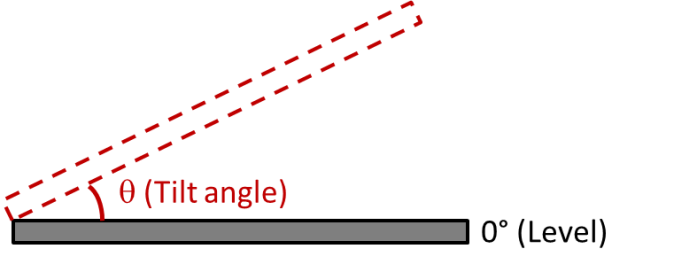
Figure 1: Single-axis Tilt Angle 
Figure 2: Dual Axis Tilt Angles of a Two-Dimensional Plane - What are the differences between "levelling instrument", "inclinometer" and "protractor"?
A levelling instrument is a device used in establishing a horizontal line of sight, aligning a surface ‘flat’ to horizontal plane or at right angles to a plumb. An inclinometer is an instrument for measuring angles of an elevation, a slope or tilt relative to the horizontal line or plane. For example, a typical traditional spirit level is often single-axis levelling instrument which is specifically built to indicate the angular state of zero degree at the true horizontal plane. Often, additional ‘spirit bubbles’ are included to further indicate plumb (90º) and 45º. Usually, it cannot be used to measure other inclination angles or angular deviations. In contrast, advanced MEMS sensor technology enables Digi-Pas® digital levels and dual axis inclinometers to equip with the capability to perform (i) levelling function, (ii) single-axis and simultaneous 2-axis inclination/angle measurements of a plane and also (iii) most protractor function in conjunction with Alternate Zero feature.

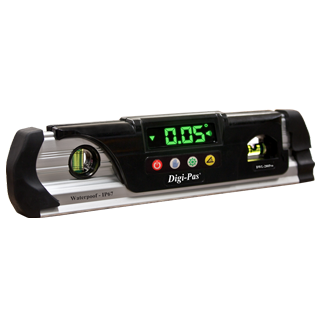

Figure 3: Traditional spirit level, Digi-Pas digital level and Digi-Pas® 2-axis Inclinometer A protractor is used for measuring the angle between two surfaces of an arc, i.e. a portion of a circle within a full rotation of 360°. This angle measurement is performed without referring to horizontal reference or earth datum which “levelling instrument” and “inclinometer” do. Hence, a protractor usually unable to indicate the state of level. The common types of protractors include manual half-disc protractor, bevel protractor and digital protractor. A digital protractor consists of a movable arm and a display screen which indicates the angle between its two arms.


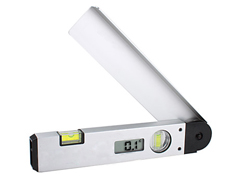
Figure 4: Half-disc Protractor, Bevel Protractor and Digital Protractor
Three-Point Contact Base of Digi-Pas® 2-axis Precision Inclinometer
- Limitations of conventional rectangular contact base levelling instrument
The contact base surface finish quality of a typical conventional leveling instrument or inclinometer is one of the critical determinants of accuracy performance and common rectangular-shape flat surface often suffer from geometrical deviation resulting from:
Waviness and unevenness
Irregularities due to distorted or worn surface
Dust and dirt trapped or surface roughness
Figure 1 illustrates three typical poor surface finishes of conventional rectangular surface four-point contact base. The unstable surface-to-surface contact causes 'rocking' which results in measurement inaccuracy derived from inconsistent readings. A common practice to improve the outcome under such constraint is by taking more samples to obtain an averaged reading. However, this time-consuming and repetitive activity often promotes boredom that succumb engineers to resort for compromising works, especially when the instrument is located at some distance.

Figure 1: Poor surface finishes of typical levelling instrument contact base and implications Although high quality surface requires both flatness and smoothness, it is difficult and expensive to control in machining of metal alloy surface particularly when involving relatively large area. Increasing the flatness and smoothness of a few microns would usually increase exponentially on its manufacturing costs. This often results in a trade-off between the manufacturing costs of the instrument and thus compromises its accuracy performance.
In addition, the rectangular contact base surface of a conventional leveling instrument is also susceptible to target measuring surface unevenness, which is another factor affecting levelling and measurement accuracy. Figure 2 illustrates issues associated when a rectangular contact base of a traditional single-axis spirit level is placed on a typical machined surface having low frequency, long wavelength flatness variation. It is clearly shown that full and stable surface-to-surface contact could not be achieved between the instrument base and the measuring surface. The contact may cause rocking that results in measurement errors, hence affects the accuracy and reliability of the leveling outcome. E.g. a 3µm of surface unevenness along the length of a typical 20µm/m resolution spirit machinist level of 130mm would result in 0.001° error
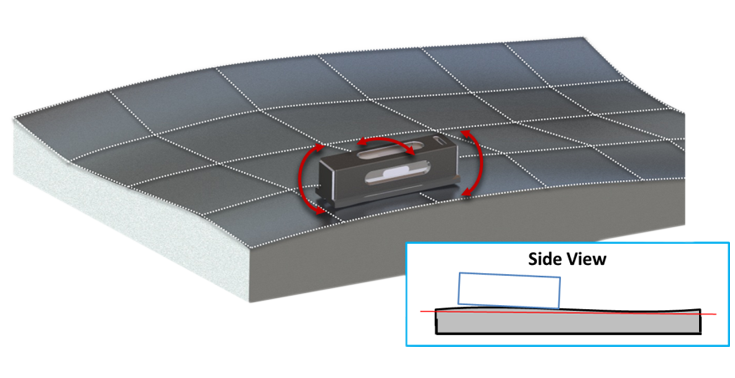
Figure 2: Conventional single-axis contact base on a two-dimensional uneven plane - Digi-Pas® concave contact base versus 'perfectly flat' contact base structures
Often, dents are easily generated on smooth metal base area of an instrument resulting from rough handling. A protruding dent formed at any location near the middle of a 'perfectly flat' metal base simply causes rocking which results in measurement error or inaccuracy. To minimize these errors, Digi-Pas® instrument metal surface base has been deliberately designed and machined to form a concave 4-points contact base specifically target to prevent rocking caused by small protruding dents or foreign particles formed at the center of device’s base. Figure 3 illustrates the inferiority of a 'perfectly flat' base of conventional instruments against the improved design of Digi-Pas® concaved 4-point base when small dents/particles exist at the center of device’s base. It is obvious that small dents or particles exist near the middle of the base shall not affect stability of Digi-Pas® instrument as it is supported by both ends having precisely machined stable contacts to the targeted measurement surface.

Figure 3. Side view of perfectly flat contact base versus Digi-Pas® concave 4-point base On the other hand, dents formed at the both ends of the instrument may not necessarily cause significant rocking. When dents happen at these both ends, an offset value/reading caused by these dents can be easily removed using Digi-Pas® calibration or Absolute Level feature (see “Accuracy Performance”). In contrast, a protruding dent formed at the middle of the device’s base destabilizes the device with severe rocking during measurement which cannot be resolved by using calibration or Absolute Level feature. This phenomenon does not only affect the instrument's initial offset value, it also affects the repeatability of measurement reading.
Thus, the contact surface approaching the base center of instrument is deliberately being designed with a concave profile to minimize the above issue, providing improved stability of measurement readings as well as enhances accuracy of the instrument.
- Pioneering the application of 3-point contact base in 2-axis precision levelling instrument
In view of the constraints inherent in conventional contact base measuring instrument described in the foregoing, Digi-Pas® pioneered and patented the utility of 3-point contact base for its 2-axis precision angular and surface flatness measurement instruments. The triangular shape of 3-point contact base seeks to address the shortcomings associated with conventional rectangular contact base.
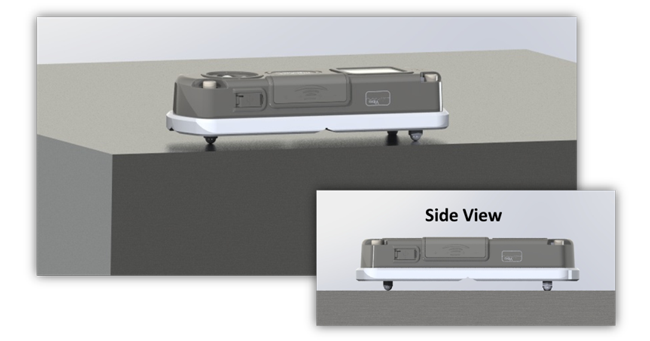
Figure 4: Stable 3-point-to-surface contact between Digi-Pas® inclinometer and flat surface object 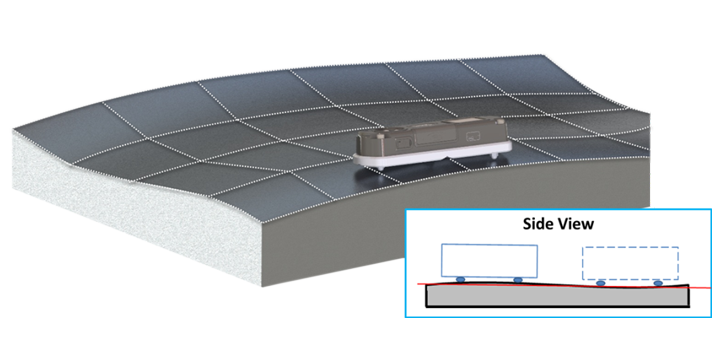
図5:傾斜計と凹凸面との間に安定した3点と面の接触 When a 3-point contact base leveling instrument is placed on either flat or uneven surface object (e.g. typically machined metal surface) as shown in figure 4 and 5 respectively, the three-point frame serves as a triangle-plane platform for supporting the weight and maintaining the stability of the instrument. It provides maximum stability and strength against downward forces and horizontal forces as well as movements about horizontal axes. With the sturdy three-point stand, a most stable 3-point-to-surface contact can be established without rocking and thus achieving consistent leveling readings of the two-dimensional measuring surface. Any angular deviations on the surface area is detected by Digi-Pas® 2-axis inclinometer as sensitive contact points touch on a particular section of uneven surface area.
- Advantages of Digi-Pas® 3-point contact base levelling instrument
In 2009, Digi-Pas® pioneered and patented the utility of 3-points contact base to its world-first 2-axis precision digital level series that effectively prevent any surface dimensional deviation caused by unevenness of its own instrument’s metal surface contact base. Figure 5 illustrates the 3-point contact base screws made of harden steel and titanium materials that offers great stability and prevent it from ‘rocking’ when placed on either flat or uneven smooth surface for 2D levelling and planar angular measurement.
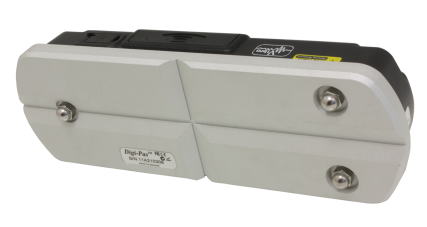
Figure 6: Digi-Pas® patented 2-Axis Precision inclinometer utilizing 3-Point Contact Base Maintaining the 3-points contact is easy, speedy and cost effective simply by replacing the harden/titanium screws whenever they wear off, saving significant amount of time and cost as compared to maintain the instrument’s contact base surface finish through standard machining. Device accuracy performance can also be re-calibrated by performing User Self-Calibration or “Absolute Level” setting at ease. Please refer to user manual for detail instructions.
For using Digi-Pas® 2-axis inclinometer to level an object having a very rough top surface, the 3-point harden/titanium screws can be temporarily removed and use the flat base surface to naturally average the rough surface. Absolute Level Setting is required to be performed immediately after changing the base to ensure the instrument maintains its reference accuracy. However, in high precision leveling, angular measurement and surface profiling tasks usually involve high quality flatness and smooth surfaces such as granite and metal alloy machined surfaces. Hence, 3-point contact base is still a better choice.






